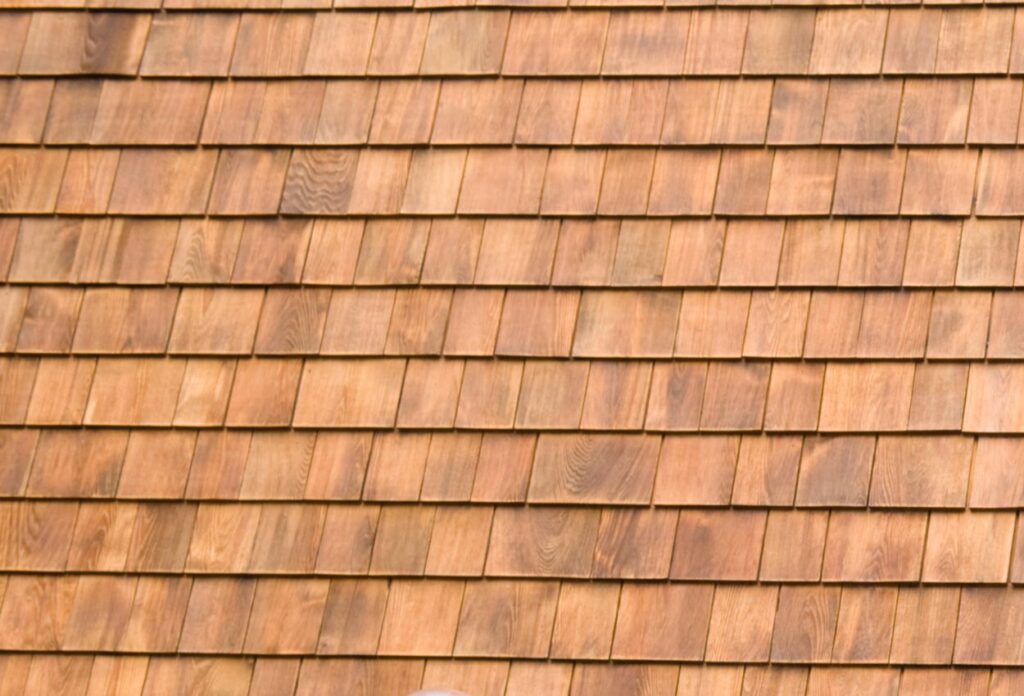Homeowners looking for a durable and natural roofing option often turn to cedar shingles. With their long history, cedar shingles are appreciated for both their longevity and their naturally rustic look. However, there is a common concern about how well they perform in high temperatures. Are cedar shingles heat resistant compared to other roofing materials? Let’s take a closer look at the thermal properties of cedar shingles and how they withstand heat.
What Are Cedar Shingles?
Before we get into the details of heat resistance, it’s important to know why cedar shingles have been a popular choice. Cedar shingles, also known as cedar shakes, are a timeless roofing option made from natural cedar wood like Western Red, Northern White, or Alaskan Yellow cedar. They are valued for their beauty, durability, and energy efficiency, giving homes a rustic look.
Available in different styles like hand-split, taper-sawn, perfection, and architectural, each type offers different benefits. Thanks to natural oils, they resist moisture, decay, and insects, lasting 30 to 40 years with proper care.
These shingles also provide insulation, helping with energy savings, and are eco-friendly since they come from renewable sources and biodegrade over time. As they age, they develop a silver-gray patina, adding character to homes.
Understanding The Heat Resistance of Cedar Shingles

Now, to answer the main question: Are cedar shingles heat resistant? Yes, cedar shingles can provide moderate heat resistance due to their natural insulation properties. Their low thermal conductivity helps reduce heat transfer, keeping homes cooler in the summer and warmer in the winter. The natural air pockets within the wood fibers act as insulation, while cedar’s oils enhance durability by preventing excessive drying and cracking.
Although cedar does not reflect heat as efficiently as metal or light-colored tiles, it absorbs less heat than dark asphalt shingles, making it a balanced option. However, prolonged exposure to intense sunlight can cause weathering in extremely hot climates, requiring additional maintenance to prevent cracks and deterioration.
What Is The Fire Resistance of Cedar Shingles?
It is essential to understand that heat resistance and fire resistance are not the same thing. As mentioned above, cedar shingles can handle moderate temperatures without warping, but they are still flammable.
To improve fire resistance, many are treated with fire-retardant chemicals, helping them meet Class B or C fire ratings. Some high-quality treated shingles can even achieve a Class A rating (the highest rating) when combined with other fire-resistant roofing materials.
Since untreated cedar shingles can catch fire at around 375 degrees Fahrenheit, homeowners living in fire-prone areas are recommended to choose other treated options instead of cedar shingles. Fire-retardant treatments, like chemical coatings or pressure treatments, help reduce fire risk but may need to be reapplied over time.
Factors Affecting Cedar Shingle Performance in Heat
Several factors impact how cedar shingles react to heat. Here is a breakdown to help you understand:
1. UV Radiation and Weathering
Cedar shingles are vulnerable to UV rays, which can cause fading and weaken the wood over time. This speeds up weathering and may shorten the roof’s lifespan. Applying UV-resistant coatings can help protect the shingles from excessive sun exposure.
2. Dryness and Brittleness
Hot, dry climates can make cedar shingles fragile, increasing the risk of cracks and splits. This can weaken the roof’s structure. Regular maintenance and protective coatings help retain moisture and prevent damage.
3. Thermal Expansion and Contraction
Cedar expands in heat and contracts when it cools. In areas with extreme temperature shifts, this movement can lead to warping or cracking. Proper installation and routine inspections help minimize these issues.
4. Moisture Control
Although cedar naturally manages moisture, extreme heat can worsen moisture problems if the roof lacks proper ventilation. Good airflow and moisture barriers help prevent trapped moisture from causing damage.
5. Climate Suitability
Cedar shingles perform best in mild climates with moderate summers and winters. In very hot regions, heat exposure can accelerate wear, making cedar less suitable unless extra precautions are taken.
How Long Do Cedar Shingles Last In Hot Climates?
In hot climates, cedar shingles can last around 20 to 30 years with regular care. Heat and UV rays can dry out the wood, making it brittle and shortening its lifespan compared to cooler areas. However, factors like shingle quality, roof pitch, and installation also affect longevity.
Comparing Cedar Shingles to Other Roofing Materials
To get a better idea of how cedar shingles perform, let’s compare them to other popular roofing materials:
Cedar Shingles vs. Asphalt Shingles
Cedar shingles offer better insulation and natural temperature control, keeping homes more comfortable year round. In contrast, asphalt shingles are more fire-resistant due to their composition, making them a safer choice in fire-prone areas. Since untreated cedar shingles are more flammable, fire-retardant treatments are necessary to improve their resistance.
Cedar Shingles vs. Metal Roof
While cedar shingles offer natural insulation, they fall short of metal’s fire resistance. Metal roofs are more durable and require less maintenance over time, while cedar offers a classic, natural look and is more environmentally friendly due to its biodegradability. Metal roofs also excel in heat reflection, which reduces heat absorption and improves energy efficiency.
What Are The Different Ways To Improve The Heat Resistance Of Cedar Shingles?
If you want to enhance the heat resistance of cedar shingles, here are some effective solutions:
1. Reflective Coatings
Applying reflective coatings helps cedar shingles stay cooler by reflecting sunlight instead of absorbing it. This reduces heat buildup, lowers energy costs, and eases the strain on HVAC systems, ultimately extending the lifespan of a cedar shingle roof.
2. Proper Ventilation
Good ventilation prevents heat buildup in the attic. Ridge vents, soffit vents, and attic fans help remove hot air, keeping the cedar shingle roof cooler and reducing stress on the shingles. Stable attic temperatures also improve overall roof performance.
3. Radiant Barriers
Radiant barriers are reflective materials installed under the roof deck to block heat from entering the attic. By reducing heat transfer, they help maintain a cooler indoor environment and protect cedar shake shingles from excessive heat exposure.
4. Regular Maintenance
Keeping cedar roof shingles in good condition is crucial. Cleaning debris, inspecting for damage, and clearing gutters prevent heat-trapping issues that can lead to premature wear and higher energy costs.
5. Preservative Treatments
These treatments protect cedar shingle from decay and insect damage, which can worsen with heat exposure. While they don’t directly improve heat resistance, they strengthen the shingles and help them withstand environmental stress.
6. Fire-Retardant Treatments
Fire-retardant treatments lower the risk of ignition and improve durability in extreme heat. While mainly for fire protection, these treatments also help cedar shake shingles maintain their structure under high temperatures, adding to their longevity.
Do Cedar Shingles Need To Be Treated?
Cedar shingles don’t always need treatment, but applying one can help them last longer. Treatments like bleaching oil, water-repellent preservatives, and semitransparent stains protect against UV rays, water damage, and fungal growth. Regular cleaning is also important to prevent debris buildup and moisture damage, keeping the shingles in good condition.
Trust Rеnova Roofing & Construction For Expert Cedar Shingle Installation!
Cedar shingles provide good insulation and a natural look, but they can dry out and crack in extreme heat. With proper maintenance, they may perform well in moderate climates. For hotter regions, fire-resistant or synthetic alternatives can be a better choice for long-term durability.
Thinking about getting cedar shingles for your home? The team at Renova Roofing & Construction offers the best cedar shingle installation services to enhance your home’s beauty and durability. Our expert team ensures your cedar shingles provide great heat resistance and long-lasting performance. Trust us for quality work and personalized service. Contact us today at (601) 647-3433!

